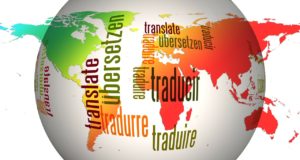How many language simultaneous or consecutive interpreters should you have at your event?
 This request comes occasionally from clients: “we do not want two interpreters for our event, we always had one and this is how we want it this time. One interpreter means more consistent terminology, and, honestly, we do not have the budget for two”.
This request comes occasionally from clients: “we do not want two interpreters for our event, we always had one and this is how we want it this time. One interpreter means more consistent terminology, and, honestly, we do not have the budget for two”.
Obviously, each project and situation is different, so it would be dangerous to generalize. There are 3 major scenarios, however, that we can review.
First of all, “redundancy” is a widely accepted engineering concept that is used far and wide when creating systems as different from each other as toasters and nuclear reactors. Using two elements or components instead of just one increases what is called “failure tolerance” i.e. the ability of the system being designed to recover from a malfunction.
 Imagine what happens if your car breaks are not redundant and there is a failure? That is why some critical systems are not even double but triple redundant: for example, Life Support Systems on the International Space Station have not one, but two backups.
Imagine what happens if your car breaks are not redundant and there is a failure? That is why some critical systems are not even double but triple redundant: for example, Life Support Systems on the International Space Station have not one, but two backups.
Same could be said about people – do you really want your commercial airliner to be operated by only one pilot? Or surgery performed by only one doctor?
Some think that language interpretation is “just words.” But in critical situations every word matters. They understand it very well in diplomatic circles where three and not even two interpreters may be working as a team for each language.
Think about the sheer number of words an interpreter works with on any given work day: 150 words per minute is average speaking rate in the United Stated for English.
 Multiply that by 30 minutes (this is how long a simultaneous interpreter’s shift lasts) and you will get 4,500 words or 18 standard pages in just 30 minutes that you have to understand and reproduce flawlessly in a foreign language in real time on any topic. The cognitive load is immense!
Multiply that by 30 minutes (this is how long a simultaneous interpreter’s shift lasts) and you will get 4,500 words or 18 standard pages in just 30 minutes that you have to understand and reproduce flawlessly in a foreign language in real time on any topic. The cognitive load is immense!
However, interpreters do not just sit passively after their shift: the interpreter listens to his working colleague, jots down new words and expressions, writes notes to his working colleague if needed, checks that terminology is accurate etc.
Interpretation is very much teamwork!
So what should the manning strength be? Let’s discuss the 3 scenarios we talked about earlier:
1 Simultaneous interpretation at a conference.
Under 30 minutes: 1 interpreter is acceptable because one standard shift is 30 minutes.
Anything above: half day or full day require 2 interpreters.
 2 Consecutive interpretation at a conference, seminar or training event
2 Consecutive interpretation at a conference, seminar or training event
Under 2 hours: one interpreter can do it but again it depends on the topic. If it is very tough technical stuff two interpreters are safer.
Anything above 2 hours requires 2 interpreters who alternate every hour or 30 minutes.
3 The so called “escort interpretation” i.e. accompanying clients to factory tours, exhibitions etc. This is the most complicated scenario because the answer is: it depends. Is it just 2-3 one hour meetings per day? Or is it a full day of business talks?
Yes, having to have 2 interpreters is more expensive, but it is critically important: if budget is tight would you delete a fancy coffee break or run a risk of gross miscommunication because of interpreter fatigue?
Large employers and international organizations such as UN, IMF, the World Bank, etc. understand very well this need for proper communication.
That is why when they hire the best interpreters, they always negotiate “manning strength” i.e. how many interpreters are needed in which situations.

InterStar Translations founder is a member of the International Association of Conference Interpreters.
For example, AIIC, the International Association of Conference Interpreters, has a clause on manning strength in the agreement with the Global Union Federations (international federations of national trade unions organizing in specific industry sectors or occupational groups)
Sometimes special terms are negotiated on a case by case basis. For example, the above agreement specifies that:
“For meetings of ½ day, in exceptional cases, one interpreter paid at 125 per cent of the applicable daily remuneration (a half-day meeting shall not exceed 3 to 3½ hours)” may be permitted. AIIC – Global Union Federations Agreement
If you only hired one interpreter in the past when two should have been hired (see scenarios above), you probably did not work with professional language services suppliers or interpreters: no interpreter worthy of the name will do simultaneous interpretation alone for a day and no professional language provider will make interpreters work in substandard conditions just to have you as a customer.
Think about hiring professional interpreters as an investment, not a liability, it is all about probability of success for your business and increasing the probability is a smart way to go.
That’s why when a language services provider insists on certain conditions, it is for your welfare, not for quick profit or on a whim!

